Your cart is currently empty!
Month: July 2024

Unlocking the Treasures of the Open Bible: A Comprehensive Guide
Introduction
The Bible, an ancient and revered collection of sacred texts, holds profound wisdom and guidance for people of all faiths and backgrounds. However, reading and understanding the Bible can be a daunting task, especially for those new to its teachings. The concept of an “open Bible” is a fundamental approach to scripture that empowers individuals to access and engage with the Bible in a meaningful way.
What is an Open Bible?
An open Bible is the idea that the Bible is available and accessible to all people, regardless of their beliefs or circumstances. It rejects the notion that the Bible is reserved solely for theologians or religious leaders and asserts that everyone has the right to read, interpret, and apply its teachings to their lives.
The open Bible movement emphasizes the importance of personal study and spiritual growth. It encourages individuals to approach the Bible with an open mind, seeking guidance and insights that resonate with their own experiences and beliefs.
Key Principles of an Open Bible
- Accessibility: The Bible is available to all people, regardless of their language, culture, or financial status.
- Transparency: The Bible’s teachings are presented openly and without hidden agendas or interpretations.
- Personal Interpretation: Individuals are encouraged to read and interpret the Bible for themselves, seeking guidance from the Holy Spirit and their own consciences.
- Diversity: Open Bible approach celebrates the richness and diversity of interpretations and perspectives on scripture.
li>Contextual Understanding: The Bible should be studied within its historical and cultural context to ensure accurate understanding.
Benefits of an Open Bible
- Increased Spiritual Growth: Personal study and interpretation of the Bible foster a deeper understanding of God’s will and Word.
- Empowerment: Open Bible empowers individuals to make informed decisions and live their lives according to biblical principles.
- Unity: Despite diverse interpretations, an open Bible approach can create a common ground for people of different faiths to engage in respectful dialogue.
- Revelation: The Holy Spirit can reveal hidden truths and insights to those who approach the Bible with an open heart.
- Transformation: The transformative power of the Word can impact individuals’ lives, leading to spiritual growth and personal change.
Practical Tips for Reading an Open Bible
1. Start with a Plan: Establish a regular time and place for Bible study. Use a reading plan or devotional to guide your readings.
2. Pray for Guidance: Ask the Holy Spirit to guide your understanding and open your heart to the truths revealed in the Bible.
3. Read Contextually: Pay attention to the overall context of the passage you’re reading, including the historical setting, cultural background, and literary genre.
4. Meditate on the Text: Take time to reflect on the scriptures you’ve read. Ask yourself how they apply to your life and what God is trying to reveal to you.
5. Seek Fellowship: Join a Bible study group or connect with a mentor to share insights and discuss your understanding of the Bible.
Conclusion
The open Bible is an invaluable tool for spiritual growth and personal transformation. By embracing its principles, individuals can unlock the treasures within the Bible and discover the profound wisdom and guidance it has to offer. An open Bible approach fosters a personal relationship with God, empowers individuals, and transforms lives. As we approach the Bible with an open mind and heart, we embark on a journey of discovery and a transformation that can illuminate our paths and lead us closer to the divine.

Unveiling the Second Commandment: A Comprehensive Guide
Introduction
The Second Commandment, a cornerstone of monotheistic traditions, holds profound significance in ethical and religious realms. This commandment prohibits the misuse and idolatry of God’s name, emphasizing the importance of reverence and propriety in our interactions with the divine. In this comprehensive guide, we will explore the multifaceted aspects of the Second Commandment, its historical context, interpretations, and practical implications in our lives.
The Wording of the Second Commandment
The exact wording of the Second Commandment varies slightly among different religious texts. In the Hebrew Bible, it appears in Exodus 20:4-5 and Deuteronomy 5:8-9:
- “You shall not make for yourself an image in the form of anything in heaven above or on the earth beneath or in the waters below.”
- “You shall not bow down to them or worship them; for I, the Lord your God, am a jealous God, punishing the children for the sin of the fathers to the third and fourth generation of those who hate me, but showing love to a thousand generations of those who love me and keep my commandments.”
In the Christian tradition, the Second Commandment is found in the Ten Commandments of the Old Testament and is typically worded as:
- “You shall not take the name of the Lord your God in vain.”
Historical Context
The Second Commandment emerged in the context of ancient Near Eastern religious practices. During that period, polytheism and idolatry were prevalent, and people often worshipped various deities through the use of images, idols, and sacred objects.
The Second Commandment served as a distinctive declaration of monotheism, affirming the exclusive worship of one God. It emphasized the dangers of idolatry and condemned the practice of attributing divine qualities to created things.
Interpretations of the Second Commandment
Prohibitions Against Idolatry
The first part of the Second Commandment clearly prohibits the creation and use of graven images or idols for worship. This prohibition is rooted in the belief that God is transcendent and cannot be depicted in physical form.
Idolatry, in this context, refers not only to the worship of physical objects but also to the misplaced veneration of material possessions, status, or personal desires. The commandment challenges us to resist the temptation to idolize anything that takes precedence over our relationship with God.
Reverence for God’s Name
The second part of the Second Commandment in Christian traditions emphasizes the importance of using God’s name with reverence. The name of God represents his character and majesty, and misusing it is considered a form of blasphemy.
This prohibition extends not only to profanity but also to flippant or irreverent use of God’s name. It calls for us to honor and respect the name of God in our speech, thoughts, and actions.
Practical Implications in Our Lives
The Second Commandment has profound implications for our daily lives, guiding our conduct towards God and others.
Avoiding Idolatry
To avoid idolatry, we must be mindful of our values and priorities. We should seek to place our faith in God alone and resist the temptation to elevate material possessions, success, or personal desires to the level of ultimate importance.
Reverence for God’s Name
We demonstrate reverence for God’s name by using it respectfully and cautiously. This means avoiding profanity, using God’s name only when appropriate, and approaching conversations about God with humility and awe.
Witnessing to God’s Character
By adhering to the Second Commandment, we become witnesses to God’s holiness and majesty. Our actions, speech, and attitudes can reflect our belief in one God and our commitment to living a life pleasing to him.
Conclusions
The Second Commandment is a fundamental principle of monotheistic faiths that forbids the misuse and idolatry of God’s name. By understanding the historical context, interpretations, and practical implications of this commandment, we gain valuable insights into the nature of God, our relationship with him, and the importance of living a life of integrity and reverence.
Embracing the Second Commandment empowers us to resist the allure of idolatry, honor the name of God, and lead lives that glorify his character. As we navigate the complexities of the modern world, may we find guidance and inspiration in this timeless commandment, which continues to shape ethical and spiritual practices across generations.
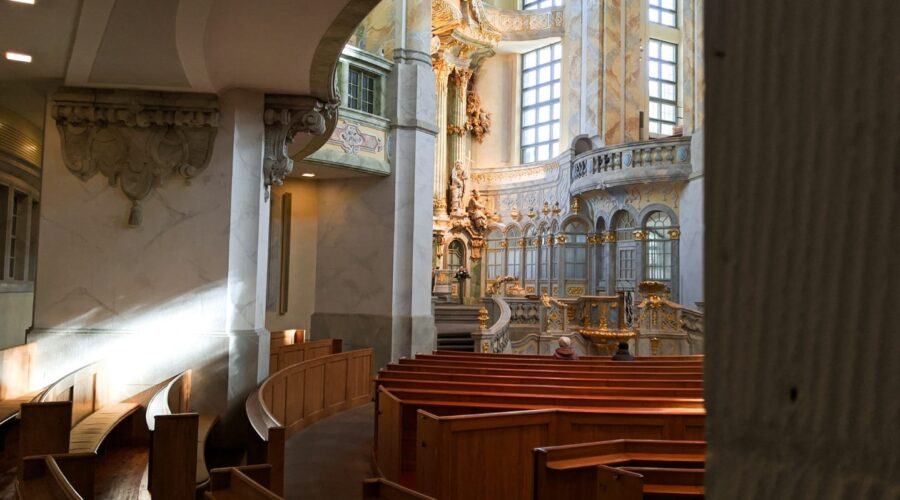
Unlocking the Treasures of the USCCB Readings: A Comprehensive Guide
The United States Conference of Catholic Bishops (USCCB) provides daily readings from the Bible, offering spiritual guidance and insights for Catholics. Delve into this comprehensive guide to explore the richness of the USCCB readings, their purpose, and how to incorporate them into your daily life.
Understanding the USCCB Readings
Purpose of the Readings
- Provide insights into Scripture and its teachings
- Nurture faith and encourage spiritual growth
- Connect Catholics with the Church’s liturgical calendar
Components of the Readings
- First Reading: Usually from the Old Testament
- Responsorial Psalm: A song or chant related to the First Reading
- Second Reading: Often from the New Testament, focusing on the teachings of Christ or the apostles
- Gospel Reading: The central passage, usually an account from the Gospels
The Liturgical Calendar
The USCCB readings follow the Church’s liturgical calendar, which marks important events and seasons in the Christian year. The readings change daily, reflecting the themes and spirituality of each liturgical season.
Incorporating the Readings into Daily Life
Daily Reflection
- Take time each day to read and reflect on the readings
- Consider the message and how it applies to your life
- Pray and meditate on the readings, seeking God’s guidance
Personal Prayer and Worship
- Use the readings to guide your personal prayers
- Incorporate the readings into your meditation, seeking deeper understanding
- Attend Mass regularly to experience the readings in a communal setting
Community Building
- Discuss the readings with others, fostering faith-sharing and growth
- Use the readings as a basis for Bible studies or discussion groups
- Connect with the Church by participating in liturgical celebrations
Resources for the USCCB Readings
USCCB Website and App
Access the daily readings, commentary, and a searchable database of Scripture passages.
Local Parish Websites
Many parishes post the daily readings and provide resources for reflection on their websites.
Catholic Apps
- Loyola Press Daily Meditations
- Magnificat
- Laudate
These apps offer daily readings, reflections, and devotional content.
Additional Tips
- Read the readings in context, considering the chapter and verse references.
- Keep a journal or use an app to record your reflections and insights.
- Attend a Bible study or retreat to deepen your understanding of Scripture.
- Engage in the readings with an open heart, seeking God’s guidance and inspiration.
Conclusion
The USCCB readings are a valuable resource for Catholics seeking spiritual nourishment and growth. By understanding the purpose and components of the readings, incorporating them into daily life, and utilizing available resources, you can unlock the treasures they hold. May these readings illuminate your journey, deepen your faith, and bring you closer to Christ.
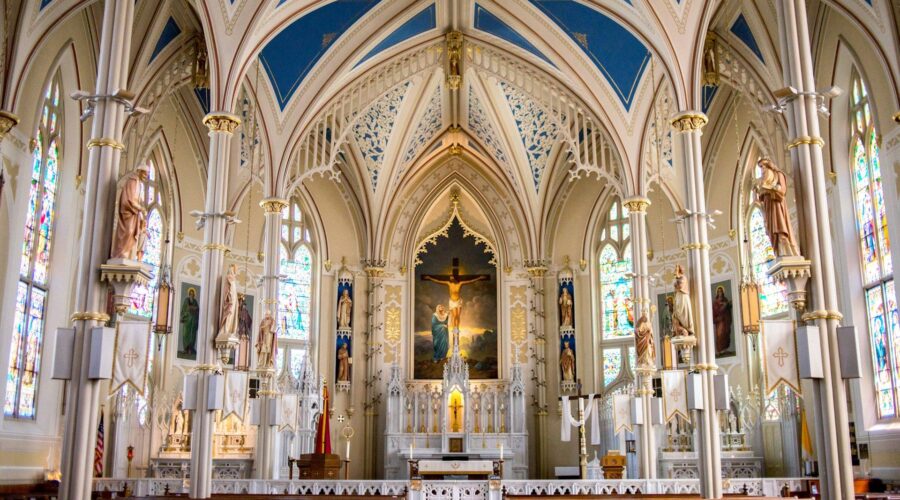
Unveiling the Horrors of ‘Sinners in the Hands of an Angry God’
Jonathan Edwards’ Fiery Sermon
The electrifying sermon, “Sinners in the Hands of an Angry God,” delivered by the renowned theologian Jonathan Edwards in 1741, remains a timeless masterpiece that deeply probes the nature of sin and the relentless wrath of God. This masterstroke of religious rhetoric paints a vivid picture of sinners hanging precariously over the abyss of eternal damnation, held only by the slender thread of God’s patience.
The Context
In the midst of the Great Awakening, a period of intense religious revival in colonial America, Edwards sought to awaken his congregation to the dire consequences of their sins. His sermon, rooted in the Calvinist belief in predestination and divine retribution, aimed to jolt listeners out of their complacency and inspire repentance.
Predestination
Calvinism held that God has predetermined the eternal fate of each individual—either salvation or damnation—from before the foundation of the world. This belief weighs heavily on the theme of the sermon, as Edwards emphasizes that sinners are born into a state of condemnation and cannot escape it through their own deeds.
Divine Retribution
Edwards believed that God’s wrath is an unavoidable reality for those who do not accept Christ as their savior. He vividly depicts God as a “consuming fire,” an “oven of fire,” and a “great furnace of wrath,” ready to inflict terrible punishment on the wicked.
The Sinners’ Plight
Edwards’ sermon graphically describes the plight of sinners, emphasizing their helplessness and the inevitability of their punishment.
Helpless and Condemned
Sinners are depicted as utterly helpless, hanging over the abyss of hell by a “thin thread” that God could sever at any moment, casting them into eternal torment. Edwards warns that there is no escape from God’s wrath once it is unleashed, as sinners cannot resist or appease his anger.
Torments of Fire
Edwards vividly paints a picture of the horrors that await the wicked in hell. He describes the “bottomless pit” as a place of unquenchable fire, ceaseless weeping, and eternal torment, where the worm of conscience gnaws relentlessly.
The Call to Repentance
Despite the terrifying prospect of God’s wrath, Edwards’ sermon also offers a glimmer of hope. He urges sinners to repent and turn to God for salvation, emphasizing that God’s mercy is still available to those who seek it.
Turn to God
Edwards implores sinners to cast themselves on God’s mercy, to confess their sins, and to seek forgiveness through Jesus Christ. He warns that the opportunity for repentance may be fleeting and that there comes a time when God’s patience runs out.
Live in Holiness
Edwards emphasizes the importance of living in holiness and obedience to God’s commandments. He warns that those who continue to sin will face the full consequences of God’s wrath, while those who repent and follow God will receive eternal salvation.
Reception and Impact
“Sinners in the Hands of an Angry God” had a profound impact on its audience. It is said that some listeners fainted or fell into convulsions during the sermon. The sermon was widely circulated in print and became a staple of religious literature for centuries.
Influence on the Great Awakening
The sermon played a significant role in fueling the Great Awakening, igniting revival throughout the colonies. It helped to awaken people to the dangers of sin and the need for salvation.
Enduring Legacy
“Sinners in the Hands of an Angry God” remains a powerful and influential sermon to this day. It continues to be studied and discussed in religious circles, as well as in literature and American history courses.
Historical Context
Understanding the historical context of the sermon is crucial for appreciating its significance.
Religious Ferment
The sermon emerged during a period of intense religious fervor in the American colonies. The Great Awakening was characterized by passionate preaching, emotional revivals, and a heightened awareness of sin and salvation.
Frontier Society
The frontier society in which Edwards preached was one of hardships and uncertainties. Death and disease were common, and life was often short and brutal. This reality heightened the fear of divine retribution and made Edwards’ message particularly resonant.
Biblical References
Edwards’ sermon draws heavily on biblical texts, particularly the Old Testament.
Old Testament Warnings
Edwards cites numerous passages from the Old Testament that warn of God’s wrath and the consequences of sin. He references the destruction of Sodom and Gomorrah, the plagues of Egypt, and the judgment of the wicked at the end of time.
The Wrath of God
Throughout the sermon, Edwards emphasizes the theme of God’s wrath. He uses strong language and imagery to convey the terror and severity of God’s judgment upon those who do not repent.
Literary Analysis
As a piece of literature, “Sinners in the Hands of an Angry God” is a masterpiece of religious rhetoric.
Figurative Language
Edwards employs powerful figurative language, including vivid metaphors, similes, and hyperbole, to create a vivid and unforgettable picture of sin and its consequences.
Emotional Appeal
The sermon is designed to evoke strong emotions in the listeners. Edwards uses sensory details and emotional language to create a sense of urgency and fear.
Rhetorical Devices
Edwards uses various rhetorical devices, such as repetition, parallel structure, and the rhetorical question, to enhance the impact of his message and to persuade his audience.
Conclusion
Jonathan Edwards’ “Sinners in the Hands of an Angry God” is a timeless and influential sermon that delves into the depths of human sinfulness and the relentless wrath of God. Its vivid imagery and powerful rhetoric serve as a stark warning against the dangers of sin and the need for repentance. The sermon remains a testament to the enduring power of religion and the enduring search for redemption in the face of divine judgment.
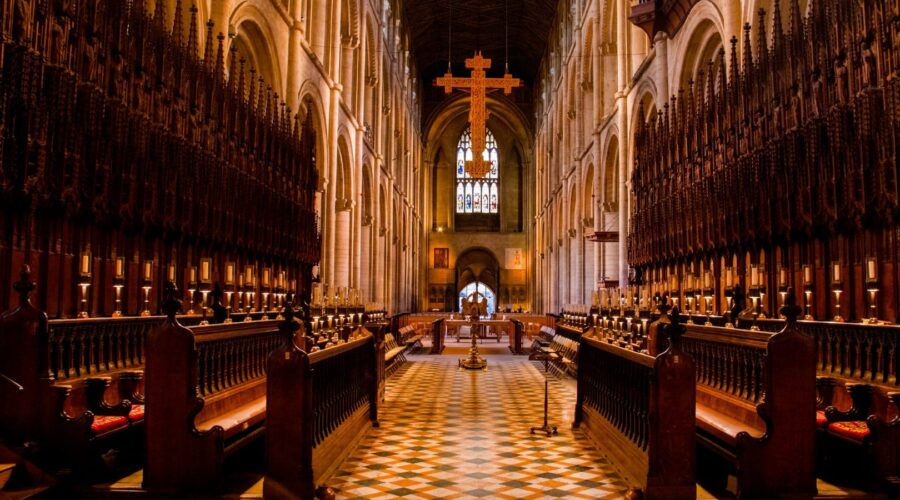
Faith to Faith: A Comprehensive Guide to Deepening Your Spiritual Understanding
Introduction
Faith is a deeply personal journey that connects us to something greater than ourselves. It can be a source of comfort, strength, and guidance in our lives. For many people, faith evolves and transforms over time, leading to a deeper understanding of ourselves and our place in the universe. This transformative journey is often referred to as “faith to faith.”
Defining Faith
Faith can be defined as a belief in something that cannot be proven or seen. It is a trust or confidence in a higher power, a spiritual principle, or a set of values. Faith can be religious, spiritual, or secular, and it can be expressed in a variety of ways.
The Journey of Faith to Faith
The journey of faith to faith is a unique experience for each individual. There is no one-size-fits-all approach, and the path may be filled with challenges and rewards.
Challenges
- Questioning Beliefs: As we grow and learn, our beliefs may be challenged by new experiences and perspectives.
- Spiritual Doubt: Moments of doubt and uncertainty are common on the faith journey, and they can be both challenging and transformative.
- Life Transitions: Major life events, such as the loss of a loved one or a change in career, can prompt us to re-examine our faith.
Rewards
- Deeper Meaning: Faith to faith can lead to a deeper understanding of our purpose and meaning in life.
- Increased Connection: A transformed faith can strengthen our connection to ourselves, others, and the divine.
- Resilience and Growth: The challenges and triumphs of the faith journey can foster resilience and personal growth.
Tips for Navigating Faith to Faith
While the journey of faith to faith is unique, there are some helpful tips that can guide you along the way:
Be Open-Minded
Approach new ideas and perspectives with curiosity and a willingness to learn. Question your beliefs, but also be open to the possibility of growth and change.
Seek Support
Surround yourself with people who support your spiritual journey. This could include family, friends, faith leaders, or members of a spiritual community.
Explore Different Traditions
Don’t be afraid to explore different faith traditions and spiritual practices. Learning about other beliefs can deepen your understanding of your own faith.
Practice Mindfulness
Pay attention to your thoughts, feelings, and experiences. Mindfulness can help you identify and address challenges and foster a deeper connection to your inner self.
Trust the Process
The journey of faith to faith takes time and effort. Don’t get discouraged by setbacks or periods of doubt. Trust that the universe is guiding you and that your faith will continue to evolve.
Conclusion
Faith to faith is a transformative journey that can lead to a deeper understanding of ourselves and our place in the universe. By embracing challenges, seeking support, exploring different traditions, and practicing mindfulness, we can navigate this journey with curiosity, resilience, and an open heart.
Remember, faith is a personal and evolving experience. Embrace the journey, trust the process, and allow your faith to guide you towards a more meaningful and fulfilling life.
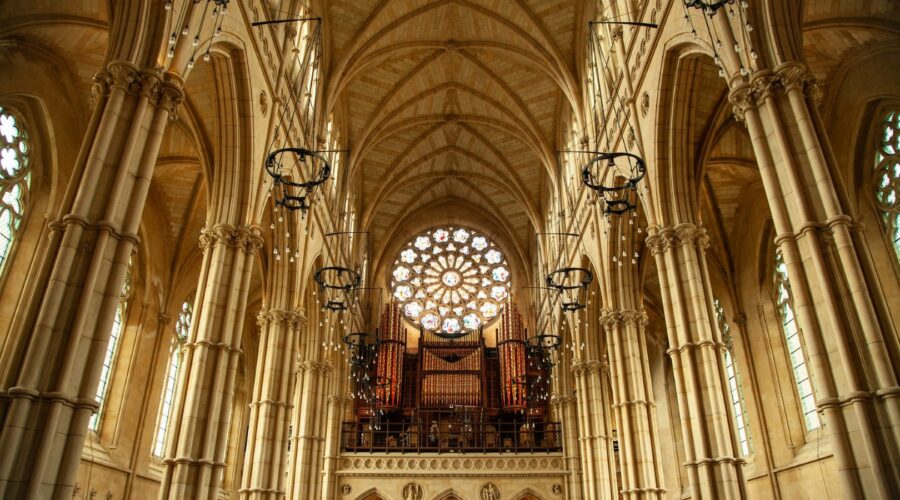
Unveiling the Splendor of La Sagrada Familia: A Masterpiece of Modern Architecture
Embark on a journey to explore one of the most iconic landmarks in the world: La Sagrada Familia, a masterpiece of Antoni Gaudí’s architectural genius. From its intricate façade to its soaring spires, this awe-inspiring basilica is a testament to Gaudí’s unwavering faith and architectural prowess.
History and Concept
An Ambitious Vision
La Sagrada Familia was conceived as a grand temple dedicated to the Holy Family – Jesus Christ, Mary, and Joseph – by a Catalan bookseller, Josep Maria Bocabella. In 1883, Gaudí took over the project, determined to create a “living” monument that would bring visitors closer to God.
Gaudí’s Integral Art
Gaudí’s vision extended beyond mere architecture. He believed in creating a holistic experience, encompassing every aspect of the building’s interior and exterior. His “Integral Art” approach merged architecture, sculpture, and nature, creating a harmonious symphony of artistic expression.
Architectural Features
Nativity and Passion Façades
The church boasts three magnificent façades: the Nativity Façade, the Passion Façade, and the yet-to-be-completed Glory Façade. The Nativity Façade, facing east, depicts the joyful birth of Christ, while the Passion Façade, facing west, portrays the suffering and crucifixion of Christ. Each façade is adorned with intricate carvings, vibrant mosaics, and symbolic sculptures.
Hyperbolic and Parabolic Vaults
La Sagrada Familia is renowned for its groundbreaking structural design. Gaudí utilized hyperbolic and parabolic vaults to achieve soaring heights and create an impression of vastness in the interior. These vaults mimic the bending and flexing of organic forms, giving the basilica an unparalleled lightness and grace.
Stained Glass Windows
Natural light plays a vital role in illuminating the basilica. Gaudí’s use of colorful stained glass windows filters light, creating a symphony of colors that dance across the interior. The windows depict Biblical scenes and symbols, enhancing the spiritual atmosphere of the space.
Symbolism and Spirituality
Nature as Inspiration
Gaudí was deeply inspired by nature, and this influence is evident throughout La Sagrada Familia. The multitude of columns resembling trees, the spiral staircases representing the DNA double helix, and the intricate carvings of flora and fauna all symbolize the unity and interconnectedness of creation.
Ascension of the Spirit
The towering spires of La Sagrada Familia soar upwards, symbolizing the ascent of the human spirit towards heaven. The central spire, dedicated to Jesus Christ, reaches a symbolic height of 170 meters, representing the Holy Family’s celestial abode.
A Living Temple
Gaudí intended La Sagrada Familia to be an ever-evolving “living temple” that would reflect the progressive nature of faith. The ongoing construction, spanning over a century, serves as a testament to the enduring legacy and universal appeal of Gaudí’s masterpiece.
Visiting La Sagrada Familia
Essential Information
Address: Carrer de Mallorca, 401, 08013 Barcelona, Spain
Opening Hours: Vary throughout the year, check official website for up-to-date information
Admission Fees: Admission fees apply, with various options available, including guided tours and skip-the-line accessTips for Visitors
- Book your tickets in advance, especially during peak season, to avoid long queues.
- Consider a guided tour to gain insights into the history, symbolism, and architectural details of the basilica.
- Allow ample time to explore both the interior and exterior of the building.
- Bring a camera to capture the stunning beauty of La Sagrada Familia from every angle.
- Dress respectfully, as it is a place of worship.
Conclusion
La Sagrada Familia stands as a testament to Antoni Gaudí’s genius and a symbol of Barcelona’s architectural heritage. Through its innovative design, captivating symbolism, and unwavering spirituality, this iconic basilica continues to inspire awe and admiration in visitors from around the world.
Whether you’re an architecture enthusiast, a spiritual seeker, or simply appreciate the beauty of human creativity, a visit to La Sagrada Familia is an unforgettable experience that will leave an enduring impression on your heart and soul.
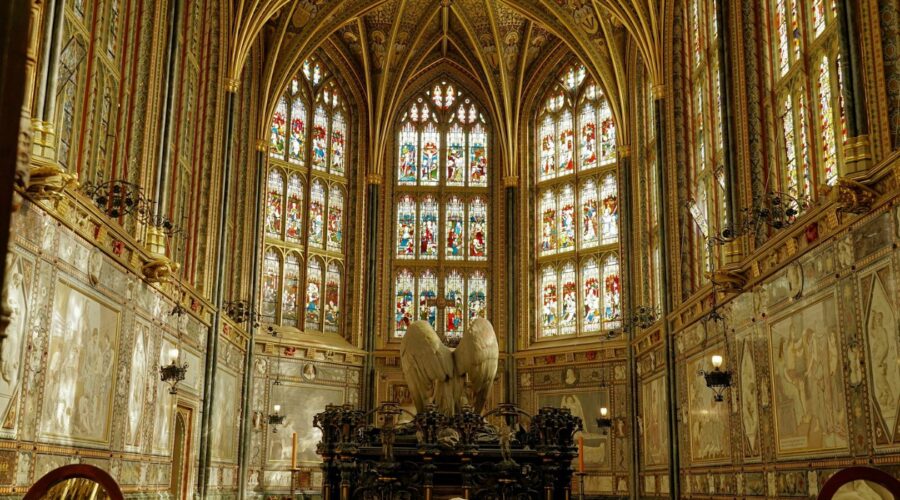
New Life Fellowship: An In-Depth Guide
Introduction
New Life Fellowship (NLF) is a global Pentecostal Christian megachurch founded by Bishop Dale C. Bronner Sr. and his wife, Betty Bronner. Based in Charlotte, North Carolina, NLF is known for its vibrant worship services, community involvement, and evangelistic outreach. This comprehensive guide will explore the key aspects of New Life Fellowship, providing valuable insights into its history, beliefs, ministries, and impact.
History
- 1984: Founded by Bishop Dale C. Bronner Sr. and his wife, Betty Bronner, as Evangelistic Center Church
- 1986: Changed name to New Life Fellowship
- 1993: Relocated to its current 11-acre campus in Charlotte
- 2003: Bishop Dale C. Bronner II succeeded Bishop Dale C. Bronner Sr. as senior pastor
- 2023: NLF celebrates its 39th anniversary, having grown to over 25,000 members
Beliefs
NLF adheres to the fundamental tenets of Pentecostalism, including:
- The Trinity: God the Father, Jesus Christ the Son, and the Holy Spirit
- Salvation through Jesus Christ: Believe in Jesus and repent of sins to be saved
- Baptism in the Holy Spirit: An empowering experience characterized by speaking in tongues
- Divine Healing: Prayer and faith can heal the sick
- The Great Commission: Spread the Gospel and make disciples
Ministries
NLF is a multifaceted ministry with a wide range of outreach programs:
- Worship Services: Energetic services featuring passionate preaching, live music, and vibrant worship
- Children’s Ministry: Interactive and age-appropriate lessons to nurture young minds
- Youth Ministry: Engagements and programs designed to empower and equip young people
- Adult Ministries: Classes, Bible studies, and support groups for spiritual growth
- Prison Ministry: Outreach to inmates, providing hope and guidance
- Social Services: Food pantry, housing assistance, and financial counseling to uplift the community
- Evangelism: Mission trips, crusades, and outreach events to spread the Gospel
Impact
NLF has had a significant impact on its community and beyond:
- Community Partnerships: Collaborations with local organizations to address social and economic issues
- Missionary Work: Support of missionaries and churches in over 40 countries worldwide
- Education: Scholarship programs and partnerships with educational institutions
- Economic Development: Investments in affordable housing, job training, and business development
- Global Recognition: NLF has gained international acclaim for its innovative ministries and outreach programs.
Conclusion
New Life Fellowship is a vibrant and dynamic Christian community that has made a significant impact on its members and the wider society. With its unwavering commitment to worship, ministry, and outreach, NLF continues to be a beacon of hope and transformation, inspiring and empowering individuals to live lives of purpose and faith.
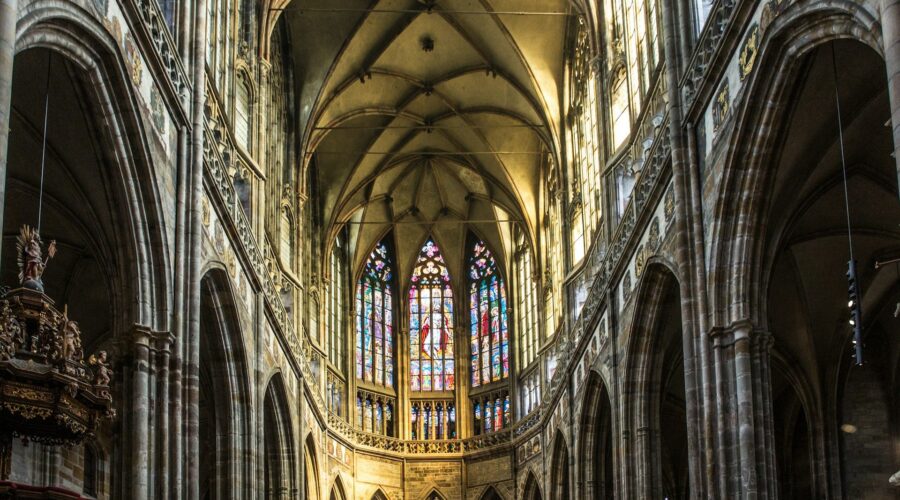
Hillside Church: A Comprehensive Guide
Hillside churches are a unique type of church that is built on a hillside. They offer a variety of benefits, including beautiful views, natural light, and a sense of community. If you are considering attending a hillside church, here is everything you need to know.
Benefits of Hillside Churches
Views
One of the best things about hillside churches is the views. They often offer stunning views of the surrounding area, which can be a great way to connect with nature and feel inspired.
Natural Light
Hillside churches are also often filled with natural light. This can create a bright and welcoming atmosphere, which can be beneficial for worship and fellowship.
Community
Hillside churches often have a strong sense of community. This is because they are often located in small towns or rural areas, where people are more likely to know each other. Hillside churches can provide a great opportunity to get involved in your community and make new friends.
Types of Hillside Churches
There are many different types of hillside churches, each with its own unique character. Some of the most common types include:
Traditional Hillside Churches
Traditional hillside churches are typically built in a classic architectural style, such as Gothic or Victorian. They often have steeples and stained-glass windows.
Modern Hillside Churches
Modern hillside churches are typically built in a more contemporary architectural style. They often have clean lines and open spaces.
Community Hillside Churches
Community hillside churches are typically built to serve the needs of a specific community. They often offer a variety of programs and services, such as childcare, after-school programs, and community meals.
Choosing a Hillside Church
If you are considering attending a hillside church, there are a few things you should keep in mind.
Location
The location of the church is important. You want to choose a church that is located in a convenient location for you and your family.
Denomination
The denomination of the church is also important. You want to choose a church that aligns with your religious beliefs.
Size
The size of the church is also important. You want to choose a church that is the right size for you and your family.
Programs and Services
The programs and services offered by the church are also important. You want to choose a church that offers the programs and services that you are looking for.
Visiting a Hillside Church
Once you have chosen a hillside church, you should visit it before making a decision. This will give you a chance to meet the pastor, see the church, and get a feel for the atmosphere.
Here are a few things to keep in mind when visiting a hillside church:
- Dress comfortably.
- Arrive early so you can find a seat.
- Be respectful of the other attendees.
- Introduce yourself to the pastor after the service.
Conclusion
Hillside churches offer a variety of benefits, including beautiful views, natural light, and a sense of community. If you are considering attending a hillside church, be sure to do your research and visit the church before making a decision.

Christian Life Center: A Nurturing Haven for Spiritual Growth and Community
In today’s fast-paced and often isolating world, finding a place for spiritual enrichment and community can be challenging. A Christian life center, also known as a discipleship center or a community center, offers a welcoming and inclusive environment where individuals can deepen their faith, connect with others, and make a meaningful contribution to their community.
What is a Christian Life Center?
A Christian life center is a place where people can gather for worship, Bible study, fellowship, and community outreach. It may be associated with a specific church or denomination, or it can operate independently as a non-profit organization. Life centers offer a wide range of programs and activities, including:
- Worship services and devotional events
- Bible study and faith formation classes
- Counseling, support groups, and life coaching
- Community outreach programs, such as food pantries, homeless support, and mentoring
- Social activities, such as games, concerts, and potlucks
Benefits of Attending a Christian Life Center
Attending a Christian life center can offer numerous benefits for individuals and families:
Spiritual Growth
Life centers provide a supportive and encouraging environment for spiritual growth. Through regular Bible study, worship, and fellowship, individuals can deepen their understanding of the Christian faith, strengthen their relationship with God, and develop a closer walk with Christ.
Community and Fellowship
Life centers offer a sense of community and belonging. They connect people from all walks of life who share a common faith. Through social activities, shared meals, and group discussions, individuals can build meaningful relationships and experience the support and encouragement of a caring community.
Service and Outreach
Many life centers emphasize the importance of serving others. They offer opportunities for individuals to volunteer their time, skills, and resources to support those in need. Through community outreach programs, life centers can make a positive impact on the lives of others and demonstrate the love and compassion of Christ.
Personal Development
Life centers also offer programs and resources to support personal development. Counseling and support groups provide a safe and confidential space for individuals to work through challenges and find healing. Life coaching and enrichment classes can help individuals improve their skills, gain new knowledge, and set personal goals.
Choosing a Christian Life Center
If you are considering attending a Christian life center, there are several factors to consider:
Affiliation and Mission
Determine the center’s affiliation with a specific church or denomination. Ensure that the center’s mission and values align with your own beliefs and goals.
Programs and Activities
Consider the range of programs and activities offered by the center. Make sure they include opportunities for spiritual growth, community involvement, and personal development.
Location and Accessibility
Choose a center that is conveniently located and accessible to you. Consider the availability of transportation and parking.
Staff and Volunteers
Get to know the staff and volunteers at the center. Look for individuals who are welcoming, supportive, and knowledgeable.
Community and Atmosphere
Visit the center and experience the community yourself. Attend a worship service or social event to get a sense of the atmosphere and whether you feel like you belong.
Tips for Getting Involved
Once you have chosen a Christian life center, there are several ways to get involved:
- Attend regular worship services and events.
- Join a Bible study group or other faith formation program.
- Volunteer for community outreach programs or special events.
- Connect with other individuals and build relationships.
- Take advantage of counseling or life coaching services as needed.
Conclusion
A Christian life center can be a transformative place for individuals and families. It provides a nurturing haven for spiritual growth, community connection, and service to others. By choosing a center that aligns with your beliefs and goals, you can unlock the many benefits of being part of a supportive and enriching Christian community.

Unveiling the Grandeur of the Cathedral of Faith
A Journey into the Heart of Spirituality
In the realm of faith and devotion, the Cathedral of Faith stands as a majestic beacon, drawing millions of believers from far and wide. This awe-inspiring architectural marvel is not just a place of worship but a testament to the boundless power of human faith and aspiration.
Prepare yourself for an immersive journey as we delve into the captivating history, intricate architecture, and life-changing experiences that make the Cathedral of Faith a truly unforgettable destination.
The Genesis: A Dream Fulfilled
The story of the Cathedral of Faith begins with Bishop Kenneth E. Hagin, a visionary leader who believed in the transformative power of the Word of God. In the early 1960s, he embarked on a mission to create a sanctuary that would inspire and empower believers from all walks of life.
After years of planning and meticulous construction, the Cathedral of Faith opened its doors in 1977, becoming a beacon of hope and spiritual renewal for generations to come.
Architectural Splendor: A Symphony of Faith
The Cathedral of Faith is an architectural masterpiece that seamlessly blends modern design with timeless symbolism. Its soaring spire, reminiscent of a reaching hand towards the heavens, is a poignant reminder of the connection between humanity and the divine.
The cathedral’s expansive sanctuary, adorned with intricate stained-glass windows and elegant chandeliers, creates an atmosphere of awe and reverence. The seating capacity of over 10,000 ensures that every believer has an opportunity to experience the transformative power of the Word.
A Heart for Community: Nurturing Faith and Growth
Beyond its architectural grandeur, the Cathedral of Faith is a vibrant hub of Christian community. It offers a wide range of programs and initiatives designed to nurture faith, promote spiritual growth, and provide support to those in need.
From dynamic worship services and inspiring teachings to life-equipping classes and outreach programs, the cathedral serves as a spiritual haven where believers can connect, grow, and make a meaningful difference in the world.
The Legacy of Faith: Inspiring Generations
For over four decades, the Cathedral of Faith has played a pivotal role in shaping the lives of countless believers. Under the leadership of Bishop Hagin and his successors, the cathedral has become a global center for the teaching and spreading of the Word of God.
Through its television ministry, conferences, and online platform, the Cathedral of Faith has reached millions of people worldwide, empowering them to live lives of faith, purpose, and impact.
Practical Information for Visitors
If you’re planning a pilgrimage to the Cathedral of Faith, here are some essential details to keep in mind:
- Address: 9736 North 12th Street, Phoenix, AZ 85020
- Service Times: Sundays at 9:00 AM and 11:00 AM (CST)
- Tours: Free guided tours of the cathedral are available daily.
- Parking: Ample parking is available on-site.
Whether you’re a lifelong believer or simply seeking a deeper connection with your faith, the Cathedral of Faith promises to be an unforgettable experience. Prepare to be inspired, empowered, and forever transformed by the power of God’s presence.
For more information and resources, please visit the Cathedral of Faith website: https://www.faithcathedral.org
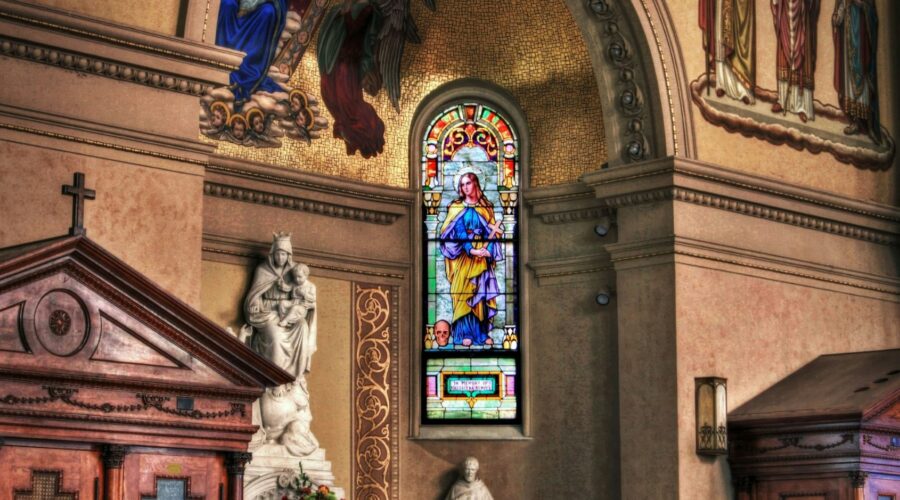
Experience Spiritual Growth and Community at Calvary Community Church
About Calvary Community Church
Calvary Community Church is a vibrant and welcoming Christian community located in [City, State]. Founded in [Year], the church has grown into a thriving congregation dedicated to fostering spiritual growth, community involvement, and service to others.
Mission and Vision
- Mission: To lead people into a saving relationship with Jesus Christ and nurture their spiritual growth.
- Vision: To be a community of believers who love God, love each other, and reach out to the world.
Services and Programs
Calvary Community Church offers a wide range of services and programs to meet the needs of its congregation and the broader community.
Sunday Services
- Contemporary Service: [Time] on Sundays, featuring modern worship music and a relevant message.
- Traditional Service: [Time] on Sundays, offering a more traditional style of worship with hymns and a sermon.
Small Groups
Small groups provide opportunities for members to connect with others, study the Bible, and grow in their faith. Groups meet at various times and locations throughout the week.
Ministries
Calvary Community Church has a variety of ministries that cater to specific demographics and interests, including:
- Children’s Ministry
- Youth Ministry
- Men’s Ministry
- Women’s Ministry
- Missions Ministry
Leadership and Staff
Calvary Community Church is led by a team of pastors and staff who are dedicated to serving the congregation and fulfilling the church’s mission.
Pastoral Team
- Lead Pastor: [Name]
- Associate Pastor: [Name]
- Pastor of Worship: [Name]
Staff
The church staff includes individuals who oversee various ministries and programs, such as:
- Children’s Director
- Youth Director
- Worship Leader
- Missions Director
Community Involvement
Calvary Community Church believes in being an active part of its surrounding community. The church supports local organizations and hosts events that aim to serve the needs of the neighborhood.
Service Projects
The church regularly organizes service projects, such as food drives, clothing donations, and volunteer work at local charities.
Events
Calvary Community Church hosts community events throughout the year, including:
- Fall Festival
- Christmas Concert
- Community Yard Sale
Giving and Stewardship
Calvary Community Church relies on the generosity of its members to support its ministries and outreach programs. The church encourages members to give sacrificially and to tithe regularly.
Online Giving
Members can conveniently give online through the church’s website.
Automatic Withdrawals
Members can set up automatic withdrawals from their bank accounts.
Cash and Check Donations
Cash and check donations can be made during services or mailed to the church office.
Location and Contact Information
Calvary Community Church is located at:
[Address]
[City, State, Zip Code]Phone: [Phone Number]
Email: [Email Address]
Website: [Website URL]Conclusion
Calvary Community Church is a welcoming and vibrant Christian community that offers opportunities for spiritual growth, community involvement, and service to others. With a variety of services, programs, and ministries, the church seeks to meet the needs of its congregation and reach out to the broader community.
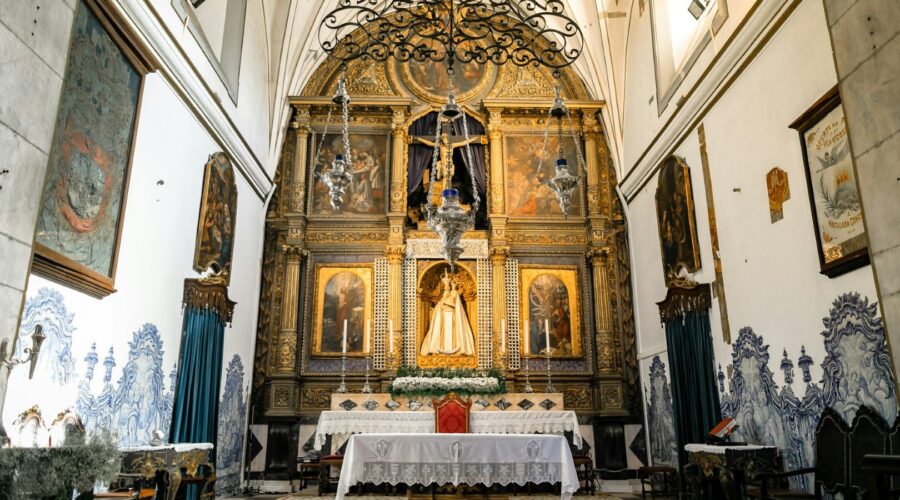
Discover the Dynamic Ministries and Programs at FBC Glenarden
About FBC Glenarden
First Baptist Church of Glenarden (FBC Glenarden) is a vibrant and thriving faith community located in the heart of Prince George’s County, Maryland. Founded in 1936, FBC Glenarden has grown into a spiritual haven that has nurtured the lives of countless individuals.
Under the exceptional leadership of Senior Pastor John K. Jenkins Sr., FBC Glenarden has become a beacon of hope and inspiration for people from all walks of life. With a mission to “know Christ and make Him known,” the church offers a wide range of ministries and programs designed to meet the spiritual, social, and educational needs of its members and the surrounding community.
Core Values of FBC Glenarden
- Excellence: Striving for the highest standards in all aspects of church life.
- Integrity: Maintaining transparency and accountability in all relationships.
- Innovation: Embracing fresh ideas and approaches to ministry.
- Community: Nurturing a sense of unity and belonging among members.
- Service: Reaching out to those in need and making a positive impact on the world.
Ministries at FBC Glenarden
FBC Glenarden offers a comprehensive array of ministries tailored to the diverse needs and interests of its members. Some of the key ministries include:
Youth Ministries
- Youth on Fire: A dynamic ministry for youth in grades 6-12, providing a safe and encouraging environment for spiritual growth, mentorship, and leadership development.
- Young Adult Ministry: Designed for individuals ages 18-30, offering a vibrant community and opportunities for spiritual exploration, career guidance, and community involvement.
Adult Ministries
- Men’s Ministry: A fellowship for men of all ages, promoting spiritual growth, accountability, and service.
- Women’s Ministry: A nurturing community for women, offering Bible study, personal development, and outreach opportunities.
- Missions Ministry: Mobilizing members to share the gospel and provide practical help to those in need both locally and globally.
Other Ministries
- Music Ministry: Inspiring and uplifting worship services led by the Sanctuary Choir, Praise Team, and other musical ensembles.
- Media Ministry: Providing livestreaming, recordings, and social media engagement to connect with a wider audience.
- Education Ministry: Offering Sunday school classes, Bible studies, and other educational programs for all ages.
Signature Programs at FBC Glenarden
In addition to its diverse ministries, FBC Glenarden offers several signature programs that have made a significant impact on its community.
The Academy
The Academy is a private Christian school serving students from pre-kindergarten through 12th grade. It provides a rigorous academic curriculum rooted in biblical principles, fostering intellectual, spiritual, and social development in students.
The Mustard Seed Community Health Center
The Mustard Seed Community Health Center is a non-profit healthcare facility that offers affordable medical, dental, and behavioral health services to underserved populations in the Glenarden area.
The Kingdom Academy for the Arts (KAA)
KAA is a performing arts center that provides training in dance, music, and theater. It offers classes for students of all ages and abilities, promoting artistic expression and cultural enrichment.
How to Get Involved
If you are interested in becoming part of the FBC Glenarden community, there are several ways to get involved:
- Attend a worship service or special event.
- Visit the church website or social media pages.
- Contact the church office by phone or email.
- Join a ministry or participate in a program.
Conclusion
First Baptist Church of Glenarden is a vibrant and multifaceted faith community that has been impacting the lives of individuals and families for generations. With its diverse ministries, signature programs, and unwavering commitment to serving others, FBC Glenarden continues to be a beacon of hope and inspiration in the Prince George’s County area and beyond.
Whether you are seeking spiritual growth, community involvement, or simply a welcoming and supportive environment, FBC Glenarden invites you to join its thriving family of believers.
FBC Glenarden Contact Information Address Phone Email 600 Watkins Park Drive (301) 559-8200 [email protected]